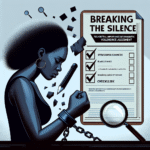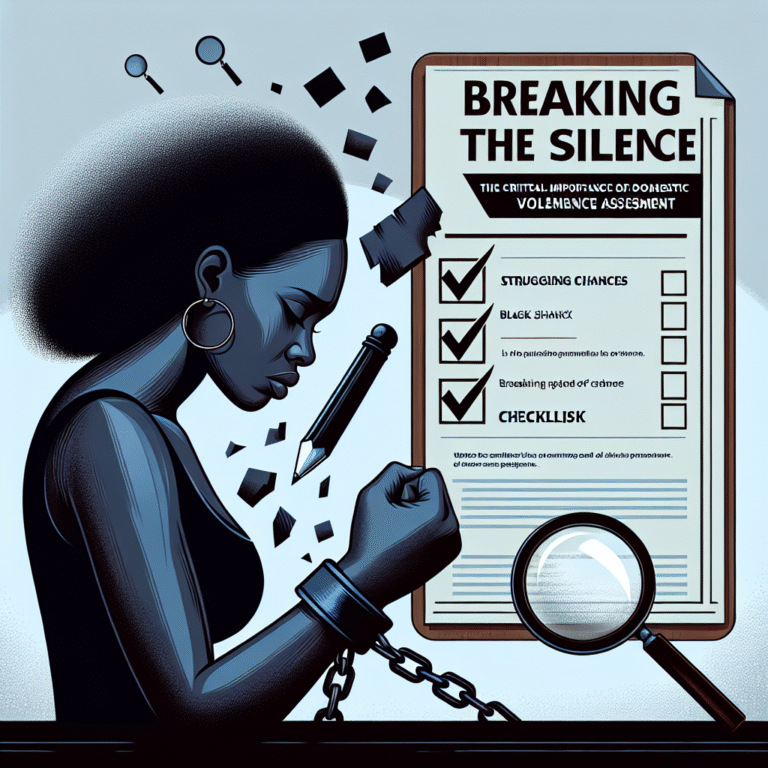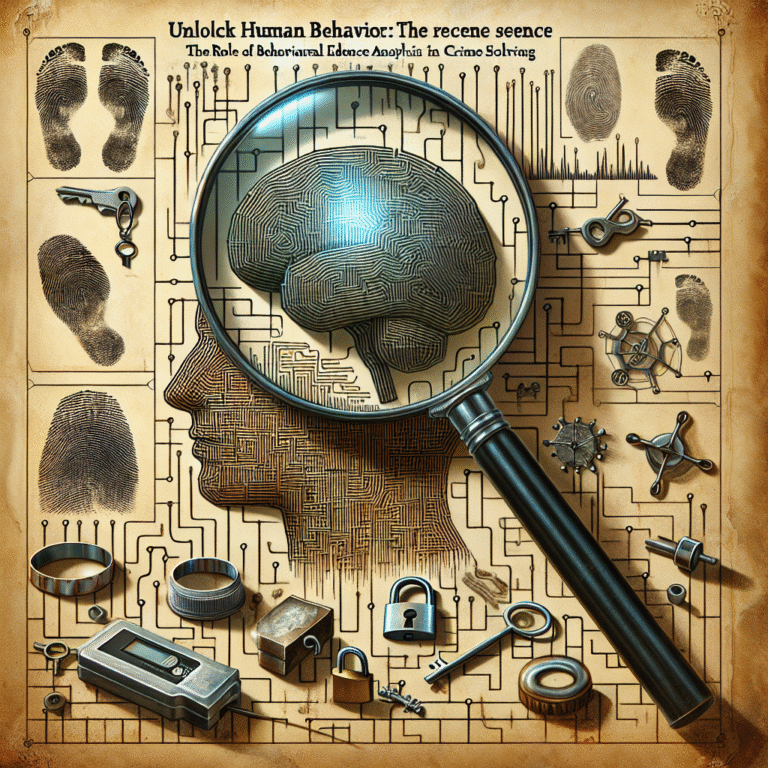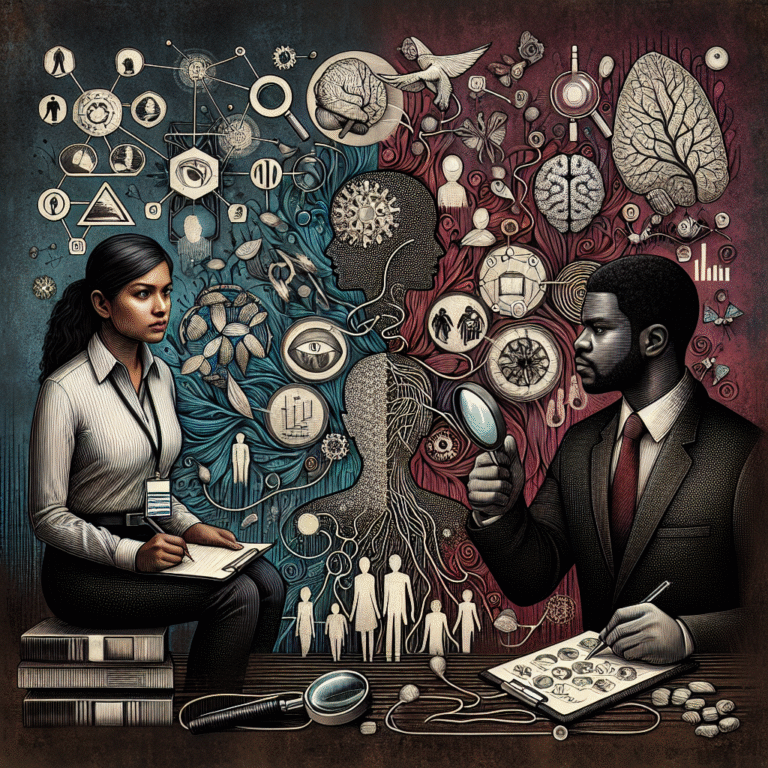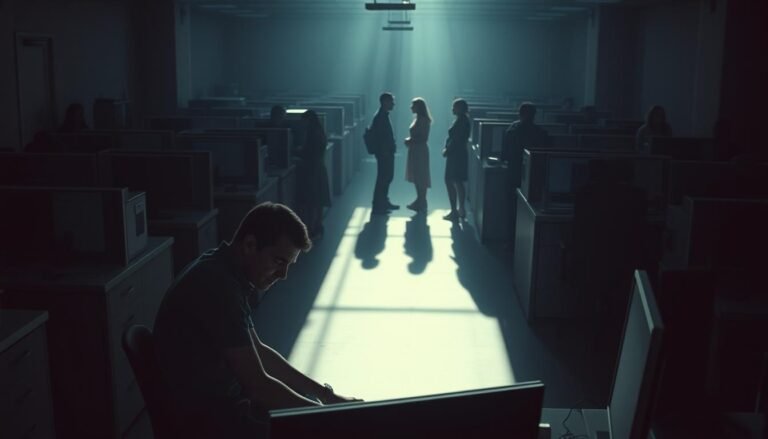
Introduction
In the often turbulent field of criminal justice, the connection between crime scenes and courtrooms serves as a critical pathway that determines the fate of individuals accused of crimes. Understanding this relationship is not merely academic; it can have profound implications for justice — for victims, defendants, and society as a whole. The power of criminal behavior analysis can be the decisive factor in bridging the gap between the scene of a crime and the courtroom. In this article, we explore “Crime Scene to Courtroom: The Impact of Criminal Behavior Analysis on Justice,” unpacking how this specialized field influences judicial outcomes, enhances investigative efforts, and cultivates societal trust in the judicial system.
The Role of Criminal Behavior Analysis
Criminal behavior analysis is a specialized field that focuses on understanding motives, patterns, and psychological profiles of offenders. The core principles of this discipline derive from psychology, sociology, and criminology, making it a multifaceted approach to crime-solving.
Understanding Criminal Behavior
At the heart of criminal behavior analysis is the question: Why do people commit crimes? Understanding underlying motivations can help law enforcement agencies comprehend typical behaviors at crime scenes, leading to more effective investigations.
Noteworthy Case Study: The BTK Killer
Consider the infamous case of the BTK (Bind, Torture, Kill) killer, Dennis Rader, who eluded capture for over three decades. Behavioral analysts studied his modus operandi, learning that he thrived on the fear and attention generated by his crimes. Understanding his psychological profile helped law enforcement agencies employ specific tactics, ultimately leading to his arrest in 2005. This case serves as a vivid demonstration of "Crime Scene to Courtroom: The Impact of Criminal Behavior Analysis on Justice."
The Crime Scene Investigation Phase
Gathering Evidence
The first step in any criminal case is the meticulous collection of evidence. The role of criminal behavior analysts here is to advise investigators on how the crime scene can reveal the offender’s psychological state. This stage is crucial as it sets the tone for what can be presented in court.
The Importance of Context
Every crime is different. A skilled analyst can interpret evidence in context, which significantly aids investigators. Understanding the environment in which the crime took place, the relationships between individuals involved, and the victimology can yield insights that lead to successful prosecutions.
Case Study: The O.J. Simpson Trial
The O.J. Simpson trial is an emblematic example of the importance of crime scene analysis. The prosecution’s inability to effectively present forensic evidence led to a widely publicized acquittal. Here, criminal behavior analysis could have been instrumental in illuminating patterns that connected Simpson to the crime scene more effectively.
Application of Behavioral Profiling
Psychological Profiles
Criminal behavior analysis moves beyond just solving crimes; it creates detailed psychological profiles of potential offenders. These profiles help law enforcement agencies focus their resources more effectively, thereby improving the chances of apprehending suspects.
Case Study: The Unabomber Investigation
In the Unabomber case, the FBI employed behavioral analysts to construct a psychological profile of the suspect based on his letters and bombing patterns. This approach not only facilitated his identification but ultimately led to his capture, showcasing the impact of criminal behavior analysis from crime scene to courtroom.
From Evidence to Prosecution
Building a Case
The journey from crime scene to courtroom is not linear. Evidence must be meticulously pieced together to build a robust case. Criminal behavior analysis assists in this process, providing essential insights that can significantly impact the prosecution’s strategy.
Ensuring Admissibility
One of the challenges faced by prosecutors is ensuring that evidence collected from crime scenes is admissible in court. Analysts often assist in justifying the import of the evidence under legal frameworks, thereby reinforcing the integrity of the judicial process.
Case Study: The Casey Anthony Case
Witness testimony and forensic evidence played critical roles in the Casey Anthony trial. Analysts critiqued the importance of breaking down behavior patterns exhibited during the investigation, which ultimately influenced the jury’s decision-making. This case illustrates the broader implications of understanding criminal behavior analysis in legal settings.
The Law Enforcement Perspective
Training and Education
Integrating criminal behavior analysis into police training can enhance investigative methods. Law enforcement agencies that invest in this type of education elevate their overall efficiency and effectiveness in solving crimes.
Collaborative Efforts
Collaboration between behavioral analysts, forensic experts, and law enforcement is crucial. By pooling their respective expertise, they can create a comprehensive understanding of criminal incidents that may be crucial in court.
The Impact on Justice
Reducing Wrongful Convictions
One of the most tragic outcomes in the criminal justice system is the wrongful conviction of innocent individuals. Employing criminal behavior analysis can minimize these occurrences by ensuring that evidence is examined critically and impartially.
Enhancing Victim Advocacy
Victims of crime often feel disenfranchised throughout the judicial process. Criminal behavior analysts can serve as advocates, emphasizing the importance of victimology in understanding motivations and impacts, creating a more humane judicial environment.
Case Study: The Central Park Five
The wrongful conviction of the Central Park Five underscores the fatal consequences of neglecting criminal behavior analysis. Initial investigations ignored critical aspects, leading to five young men being convicted for crimes they did not commit. The re-examination of this case years later highlighted the importance of behavioral studies and underscored their potential to prevent future injustices.
Future Trends in Criminal Behavior Analysis
Advancements in Technology
From artificial intelligence to advanced psychological modeling, the future of criminal behavior analysis is bright. New technologies promise not only to streamline investigative processes but also to generate more accurate offender profiles.
Ethical Considerations
While advancements hold promise, ethical considerations remain paramount. Striking a balance between effective law enforcement and individual rights will be crucial as criminal behavior analysis evolves.
Conclusion
Crime scene investigation and courtroom proceedings are intricately linked through the lens of criminal behavior analysis. This field emerges as an essential player in the quest for justice, shaping how cases are built and how justice is served. The journey from crime scene to courtroom is fraught with challenges, but understanding criminal behavior can lead to better outcomes for all parties involved.
As we consider the implications of "Crime Scene to Courtroom: The Impact of Criminal Behavior Analysis on Justice," we are reminded that each case represents not only forensic evidence and legal arguments but also human lives, stories, and the quest for truth. Embracing these insights can inspire us all to advocate for a more just system where the truth prevails.
FAQs
1. What is criminal behavior analysis?
Criminal behavior analysis is the study of psychological and sociological factors that influence criminal activity. It involves profiling offenders to aid law enforcement in understanding and apprehending suspects.
2. How does criminal behavior analysis impact court cases?
Criminal behavior analysis helps understand motives and patterns in criminal activity, which can significantly strengthen cases in court by providing valuable insights into the psychological profile of offenders.
3. Can criminal behavior analysis help prevent wrongful convictions?
Yes, by examining evidence critically and understanding the intricate details of a case, criminal behavior analysis can reduce the likelihood of wrongful convictions.
4. What role does technology play in criminal behavior analysis?
Advancements in technology, including AI and data analysis tools, enhance the ability to create accurate psychological profiles and streamline investigations, ultimately leading to more effective law enforcement.
5. How can victims benefit from criminal behavior analysis?
Victims can benefit as criminal behavior analysts serve as advocates in the judicial process, emphasizing their experiences and needs, which can lead to a more compassionate and supportive legal environment.

